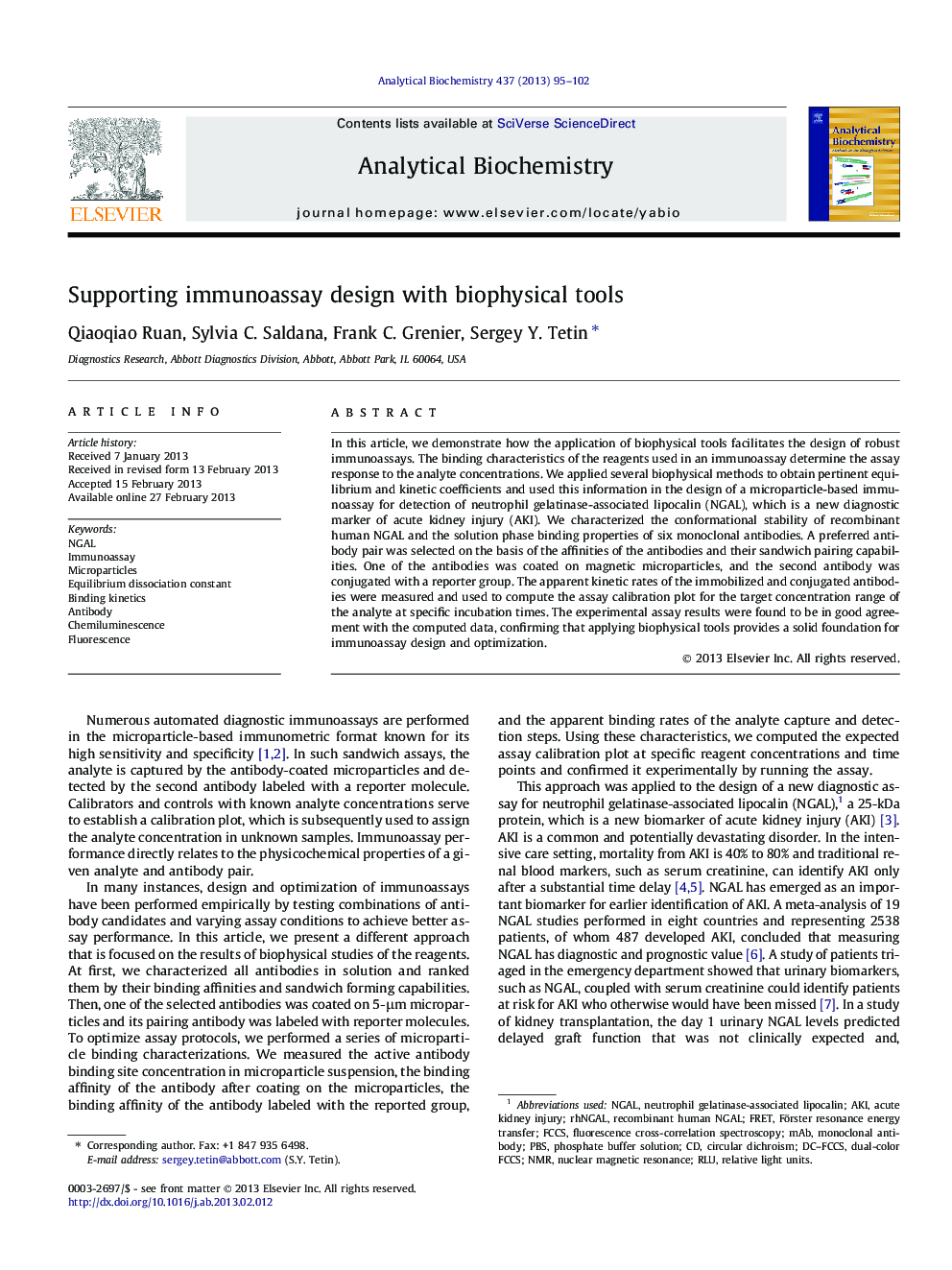| کد مقاله | کد نشریه | سال انتشار | مقاله انگلیسی | نسخه تمام متن |
|---|---|---|---|---|
| 1173858 | 961705 | 2013 | 8 صفحه PDF | دانلود رایگان |

In this article, we demonstrate how the application of biophysical tools facilitates the design of robust immunoassays. The binding characteristics of the reagents used in an immunoassay determine the assay response to the analyte concentrations. We applied several biophysical methods to obtain pertinent equilibrium and kinetic coefficients and used this information in the design of a microparticle-based immunoassay for detection of neutrophil gelatinase-associated lipocalin (NGAL), which is a new diagnostic marker of acute kidney injury (AKI). We characterized the conformational stability of recombinant human NGAL and the solution phase binding properties of six monoclonal antibodies. A preferred antibody pair was selected on the basis of the affinities of the antibodies and their sandwich pairing capabilities. One of the antibodies was coated on magnetic microparticles, and the second antibody was conjugated with a reporter group. The apparent kinetic rates of the immobilized and conjugated antibodies were measured and used to compute the assay calibration plot for the target concentration range of the analyte at specific incubation times. The experimental assay results were found to be in good agreement with the computed data, confirming that applying biophysical tools provides a solid foundation for immunoassay design and optimization.
Journal: Analytical Biochemistry - Volume 437, Issue 1, 1 June 2013, Pages 95–102